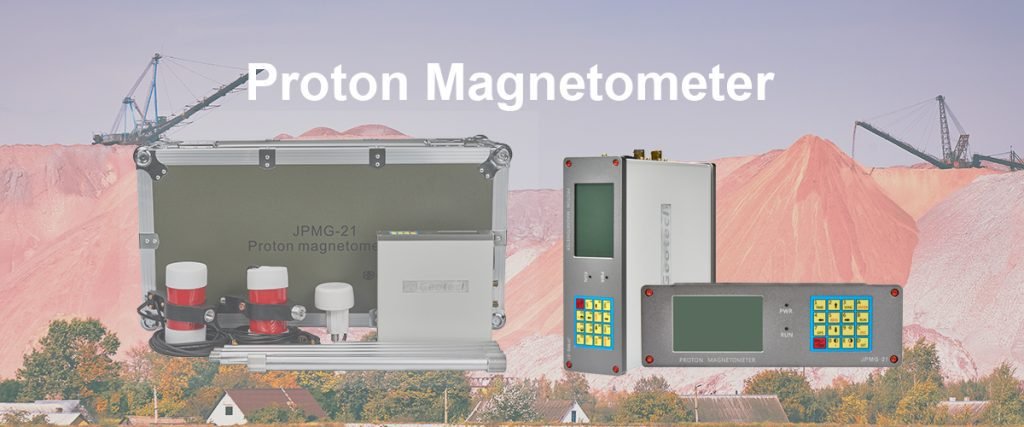Welcome to Geotech!

From Protons to Atoms: The Evolution of Magnetometer Technology and Its Cutting-Edge Applications
Introduction: A Century of Magnetometer Evolution
The magnetometer, an instrument for measuring magnetic field strength, direction, or gradient, traces its origins to Gauss’s absolute magnetometer in 1833. As electromagnetism and electronics advanced, magnetometers evolved through four major technological generations: mechanical/inductive, nuclear magnetic resonance (e.g., proton magnetometers), optically pumped/fluxgate, superconducting SQUID, and emerging atomic magnetometers. Modern applications in geophysics, archaeology, pipeline detection, and engineering demand higher sensitivity, faster sampling, and portability.

I. Definition and Classification of Magnetometers
Magnetometer: Scientific instrument for measuring Earth’s or localized magnetic parameters (intensity, gradient, vector).
Classification by Technology Generation:
- 1st Gen (Mechanical/Inductive):
- Mechanical magnetometers (magnetic needle deflection)
- Induction coils (search-coil) for time-varying fields
- 2nd Gen (Electronic/NMR):
- Proton Magnetometers (PPM)
- Overhauser/optically pumped (Cesium/Potassium)
- Fluxgate
- 3rd Gen (Superconducting):
- SQUID (Superconducting Quantum Interference Device)
- 4th Gen (Atomic):
- Spin-Exchange Relaxation-Free (SERF)
- Two-photon resonance
II. Principles and Characteristics by Generation
- Mechanical/Inductive Magnetometers
- Principle: Magnetic needle deflection or Faraday’s law of induction
- Performance: ~10 nT precision, real-time sampling for dynamic fields
- Limitations: Low accuracy, limited to variable fields
- Proton Magnetometer (PPM)
- Principle: Measures Larmor precession frequency of hydrogen nuclei (f = γ·B, γ≈42.576 MHz/T)
- Performance:
- Absolute precision: ±0.1–0.2 nT
- Noise floor: <0.05 nT
- Sampling rate: 0.1–0.33 Hz (3 s/point for JPMG Series)
- Flagship Product: JPMG Series Proton Magnetometer
- OCXO temperature stabilization
- GPS/GIS real-time positioning
- 3-second ultra-fast sampling
- Optically Pumped & Fluxgate Magnetometers
- Overhauser: Radical-enhanced NMR, 0.01–0.02 nT precision, low power
- Cesium Vapor: 300 fT/√Hz sensitivity, high cost
- Fluxgate: Compact, ±1–10 nT accuracy, UAV-compatible
- Superconducting SQUID
- Principle: Josephson junction interference in superconducting loops
- Performance: 5×10⁻¹⁸ T sensitivity, 3 fT/Hz⁰․⁵ noise
- Applications: MEG, low-field MRI, deep resource exploration
- Atomic Magnetometers (SERF)
- Principle: Quantum spin manipulation in near-zero fields
- Performance: Sub-fT sensitivity at room temperature
- Future Potential: Miniaturization for field deployment
III. Technology Comparison
| Type | Precision | Sampling Rate | Sensitivity | Strengths | Weaknesses |
|---|---|---|---|---|---|
| Mechanical/Inductive | ~10 nT | Real-time | ~nT-level | Rugged, simple | Limited to dynamic fields |
| Proton Magnetometer(PPM) | ±0.1–0.2 nT | 0.1–0.33 Hz | ~0.05 nT | Absolute measurement, stable | Moderate sampling speed |
| Overhauser | ±0.01–0.02 nT | 1 Hz | ~0.01 nT | Low power, portable | High cost |
| Cesium Optically Pumped | <0.01 nT | ≥1 Hz | 300 fT/√Hz | Extreme sensitivity | Expensive, environmental sensitivity |
| Fluxgate | ±1–10 nT | Real-time | ~1 nT | Compact, low cost | Drift-prone |
| SQUID | fT–pT level | Real-time | 3 fT/Hz⁰․⁵ | Ultimate sensitivity | Cryogenic requirements |
| SERF Atomic | fT level | Real-time | <1 fT | Room-temperature operation | Bulky, requires shielding |
IV. Applications and Case Studies
- Mineral Exploration
- Case: JPMG Series mapped a buried iron ore body in Northern China with 90% drill-hit accuracy using 5m grid spacing.
- Archaeological Prospection
- Case: Ming Dynasty wall foundations detected non-invasively in Northwest China using JPMG’s 0.05 nT sensitivity.
- Urban Pipeline Detection
- Case: Coastal metro project avoided 10 pipeline ruptures via JPMG-GIS integration (3s/point mapping).
- Scientific Research
- SQUID: Brain imaging (MEG) and extraterrestrial magnetism studies.
- Atomic Magnetometers: Lab-grade fT measurements without cryogenics.
V. JPMG Series Proton Magnetometer: Competitive Edge
- Ultra-Fast Sampling: 3 seconds/point (0.33 Hz) for high-efficiency surveys.
- Precision Engineering: ±0.1 nT absolute accuracy, <0.05 nT noise floor.
- OCXO Thermal Control: Eliminates drift for 24/7 field reliability.
- Integrated Portability: Backpack-ready with real-time GPS/GIS data fusion.
VI. Future Trends
- AI-Driven Innovation: Machine learning for anomaly inversion and noise reduction.
- Multiphysics Integration: Combined magnetic-electromagnetic-gravity platforms.
- Cost-Effective R&D: Domestic advancements bridging the gap with global leaders like GEM and Geometrics.
Reference
- WIKI:https://en.wikipedia.org/wiki/Electrical_resistivity_tomography
- Society of Exploration Geophysicists (SEG) :https://seg.org/
- Society of Environmental and Engineering Geophysicists (EEGS) https://www.eegs.org/
- Geology and Equipment Branch of China Mining Association http://www.chinamining.org.cn/
- International Union of Geological Sciences (IUGS) http://www.iugs.org/
- European Geological Survey Union (Eurogeosurveys) https://www.eurogeosurveys.org/
-1.png)

